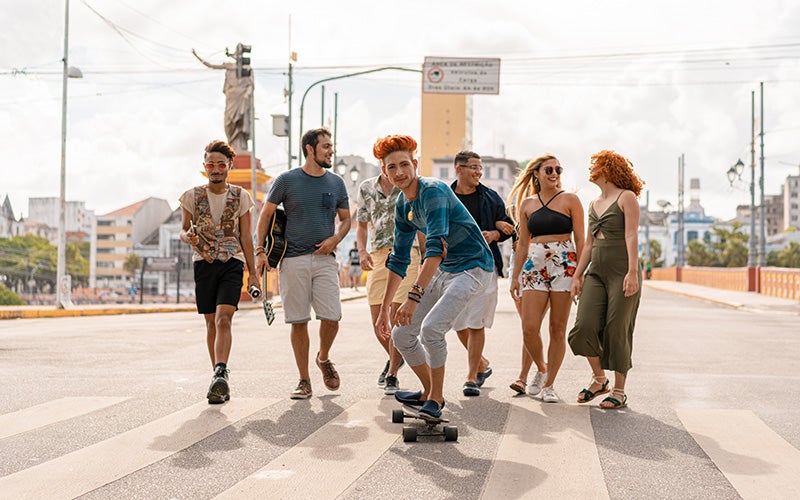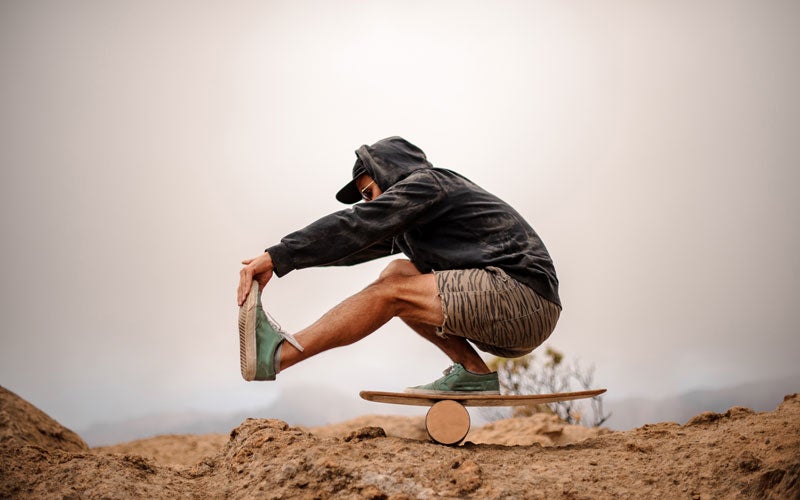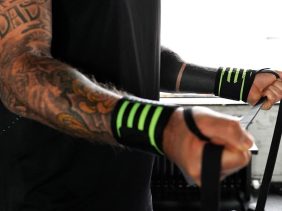How to skateboard: 7 tips for absolute beginners
 ©MesquitaFMS
©MesquitaFMS
Skateboarding is a fast-paced sport that’s perfect for hanging out with friends over the summer. The basic technique is easy to learn, so you don’t have to wait too long before you start to see progress. Want to pick up speed or practice your first tricks? Keep reading for everything you need to know about how to skateboard – or at least how to get started!
What Do You Need To Ride a Skateboard?
Seen skateboarders glide over ramps or conquer rails with a casual jump and wondered how you can get into this sport? Before you hit the streets, you’ll need to get your hands on the right equipment:
First of all, of course, you need a skateboard. The board itself, also called the deck, is about 70 to 80 centimeters long and 20 centimeters wide with four wheels. The ends – the nose at the front and tail at the back – are rounded and bent slightly upwards. These are called kicktails and they make it easier to do tricks.
The longer the board, the easier it is to keep your balance. But the trade-off is that these longboards are less maneuverable. It’s best to go to a local skate shop for advice on which skateboard is suitable for you and your skills.
It’s also a good idea to wear some skate shoes. Classic sneakers are also ok but make sure that the sole is as flat and as uniform as possible to maximize your grip.
Knee pads, a helmet, and elbow and wrist guards should also be part of your essentials.
Our tip: Curious about other roller sports and how they could fit into your workouts? Check out our article on rollerblading!
Which Muscles Does Skateboarding Train?
Unlike rollerblading, skateboarding is less about covering distance and more about doing tricks, so the focus is on strength and balance. This makes skateboarding a good sport for strengthening your muscles: for example, your core needs to stay active in order for you to stay upright. Your glutes and thighs are also under almost constant tension when pushing off, riding, or jumping.
Skateboarding is also ideal for improving your coordination and reaction time. In addition, skateboarding can help stabilize your joints and improve your upper body posture and body awareness through the ongoing balance training.
Our tip: If you’re out and about a lot in the skate park or in the city, you’ll need a little snack to keep you going. What gives you a better boost than a delicious cookie? Our Protein Cookies are packed with protein, but not that much sugar, so they’re perfect for when you’re on the go!
Last but not least: skateboarding is a sport that’s all about the community. Whether you practice in the park or on the halfpipe, you’ll meet like-minded people anywhere you skate.
It’s not about outdoing each other or competing all the time. Instead, it’s about pushing each other to improve your own skills and just have fun together!
Training tip: Work on your balance with these balance exercises and you’ll be like a pro on your skateboard in no time!

How Dangerous Is Skateboarding?
From beginners to experienced skaters, falls are pretty frequent in this sport, so you can get scraped up quickly. Broken bones, torn ligaments, and concussions are also typical skateboarding injuries.
The risk can be minimized if you’re careful when you start skateboarding and protect yourself every time you head out. That’s why we recommend you wear a helmet and pads. Riding on a well-maintained, flat surface is also less dangerous than skateboarding on sandy, wet, or slippery surfaces.
Who Should Learn to Skate?
Anyone can learn to skateboard! But if you already have had some experience in surfing, snowboarding, or longboarding, it’ll be easier for you to learn the basics.
A good level of body strength is also an advantage, which makes regular core training a good idea. Check out our 9 top ab exercises for a strong core!
If you have severe back problems or joint problems, learning to skateboard may not be for you because of the increased risk of falling.
Learn How to Skateboard: 7 Tips
When you get on a skateboard for the first time, it’s hard to imagine being able to do any tricks because everything’s usually pretty shaky. But if you’re patient and take your time, you’ll gain more and more confidence and stability. Here are seven tips to help get you started:
#1 Basic Stance: Which Foot Forward?
Before you start learning to skateboard, it’s important to get comfortable just standing on the board. Find a stable surface where the board can’t roll away like a lawn. Your front foot maintains your balance. Your back foot is the one you’ll use later to push and pick up speed. In the basic stance, your feet are shoulder-width apart, placed roughly above the two axles, rotated perpendicular to the direction of travel.
Which is the best foot to put forward? Close your eyes and let yourself fall forward. The foot you lunge with to keep yourself from falling is your front foot. If your left foot is in front, your stance is called regular; if your right foot is the front foot, it’s goofy. When you start doing a trick in the opposite stance from your usual one, it’s called switch.
#2 Starting
Make your first skating attempts on a smooth concrete surface like a new parking lot. A slight slope can help because you’ll start to glide after you push off and get a good feel for riding.
Position your front foot just behind the front wheels of the deck in the direction of travel and place your back foot parallel to it on the ground. Use your back foot to push forward to pick up momentum. Your body’s weight is over your front foot. Once you’re going fast enough, place your pushing foot on the board over the rear axle and turn your front foot so that both are parallel.

#3 Secure stance
When standing and skating on the board, bend your knees slightly to get extra stability and protect your joints from too much strain. Use your arms to balance and don’t forget to tense your core and stand as upright as possible. Look in the direction you’re going.
#4 Turn
If you can skate straight ahead safely, practice steering: Shift your body weight to your heels or the balls of your feet when you want to turn.
#5 Brake
To stop, turn your front foot in the direction of travel and let the sole of your back foot lightly scrape the ground. The friction will reduce your speed, but this way of braking only works if you’re going slow. You can also jump off the board, but that’s a bit more difficult and needs to be practiced.
#6 First Tricks
Standing safely on the skateboard and skating through curves and braking without falling? Then it’s time to reach into your bag of tricks. The ollie should be your first of many skateboarding tricks.
Begin the trick in the basic stance. Push your back foot down firmly on the tail of the board so it touches the ground. At the same time, pull your front foot up and push forward. The goal is to get your board into a horizontal position when it’s in the air. In the beginning, the board will only be a few inches off the ground in the middle of the trick, but with practice you’ll get higher and higher.
#7 Practice in a group
Find a group to skate with from the very beginning. Even though you’re alone on the board, skateboarding is still a community sport that connects you to other skaters. Plus, experienced skaters can help you out a bit and show you new tricks.
Conclusion
- Skateboarding is a roller sport that uses a board with four wheels for tricks on flat ground and courses.
- Skateboarding mainly trains balance, your core, glutes, and leg muscles, as well as coordination and reaction time.
- Anyone can learn to skateboard but it helps if you can already snowboard, surf, or longboard.
- Pads and a helmet are part of the essential equipment for skateboarding.
Sources for this article
We at foodspring use only high-quality sources, including peer-reviewed studies, to support the facts within our articles. Read our editorial policy to learn more about how we fact-check and keep our content accurate, reliable, and trustworthy.





























